How to Mix Wood Tones in Interior Design: Expert Tips for a Cohesive Look
Master the art of mixing wood tones with expert interior design tips for creating a balanced, cohesive, and visually rich home environment.
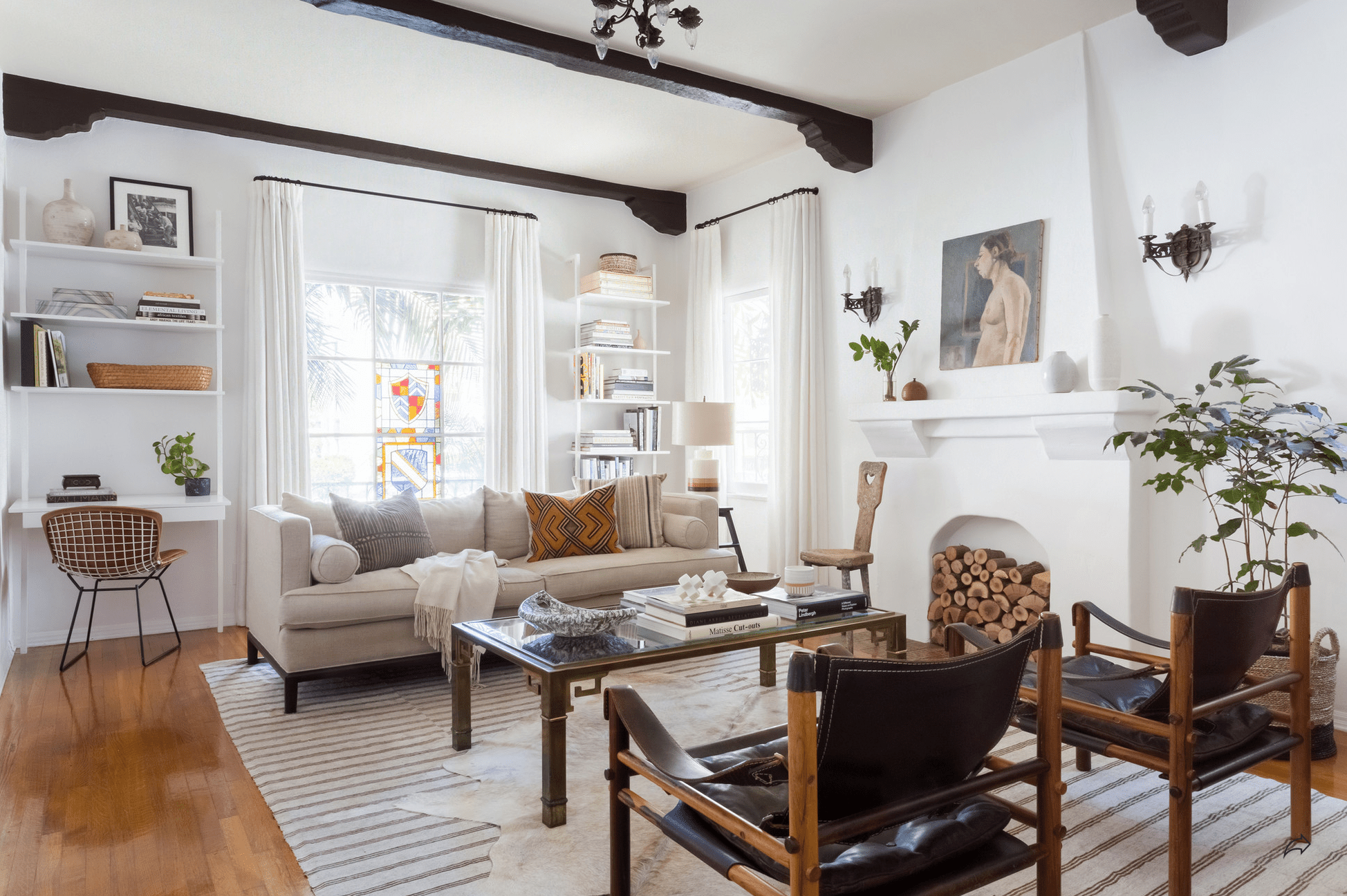
Mixing wood tones in your home might seem like walking a design tightrope, one misstep and the whole room feels off. But the truth is, combining different wood tones can bring richness, depth, and character to your space when done right. Think of it like layering flavors in cooking: contrast can enhance, not clash, if you know the rules.
If you’ve ever stood in your living room with a walnut coffee table, oak floors, and a birch shelf and thought, “Is this too much?”, you’re not alone. But don’t worry, I’ve got you. Let’s walk through 15 practical, human-friendly tips to help you confidently mix wood tones and create a cohesive look that feels intentional and beautifully layered.
1. Start with a Dominant Wood Tone
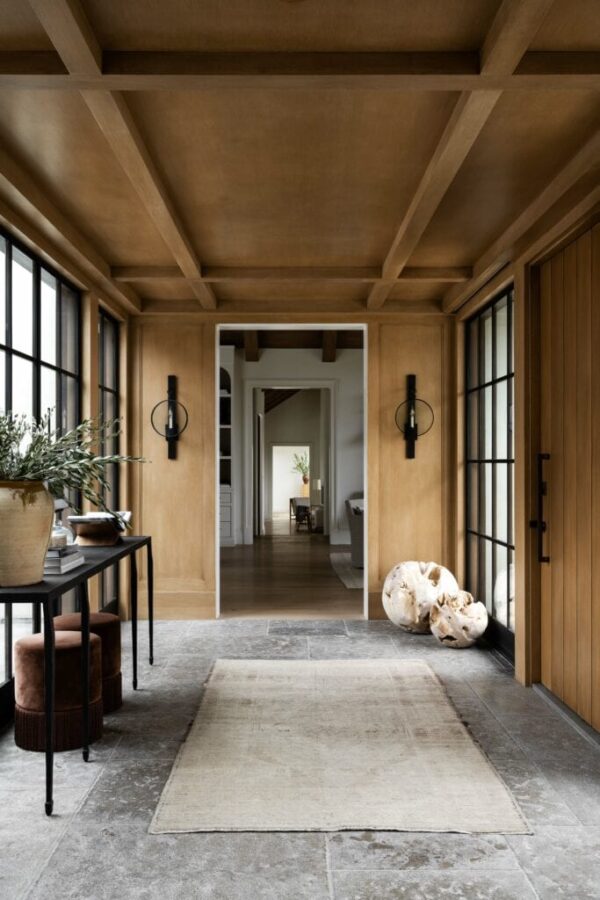
Every great room needs an anchor, and wood tones are no different. Choose one primary wood tone to serve as the “base” for your room. This is usually your flooring, a large piece like a dining table, or even built-in cabinetry. Once that’s decided, the other tones can work around it.
Let’s say your floors are a warm honey oak. You don’t have to match everything to it, but you’ll want other woods to complement rather than compete with it. Think of your dominant tone as your outfit’s main color, everything else is the accessories.
2. Use Contrast Intentionally
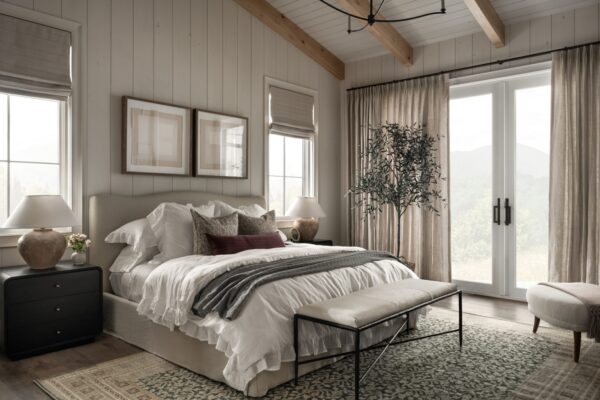
Don’t shy away from contrast. In fact, contrast can bring depth and interest to a space, as long as it’s intentional. The key is to make sure there’s enough difference between the tones so it doesn’t look like a near-miss.
A dark walnut bookshelf against pale oak floors? Stunning. A medium cherry table next to slightly lighter maple chairs? That’s where things can get murky. If two tones are close but not quite the same, the eye may read it as a mismatch. Make the difference noticeable or keep it in the same family.
3. Tie Everything Together with Accessories
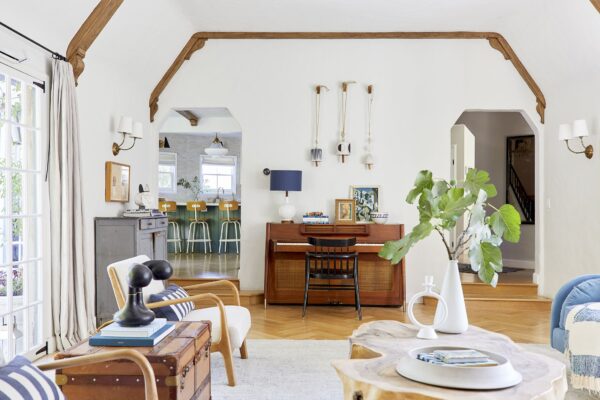
Rugs, throw pillows, art, and textiles are your best friends when mixing wood tones. They act as buffers between competing tones and help blend everything into a cohesive look.
For example, if your dining table and chairs are different wood tones, a neutral rug underneath can help break up the contrast. Throw in some cushions or decor items in complementary colors to reinforce the bridge between the wood tones. Soft goods don’t just add comfort, they’re strategic design tools.
4. Match the Undertones
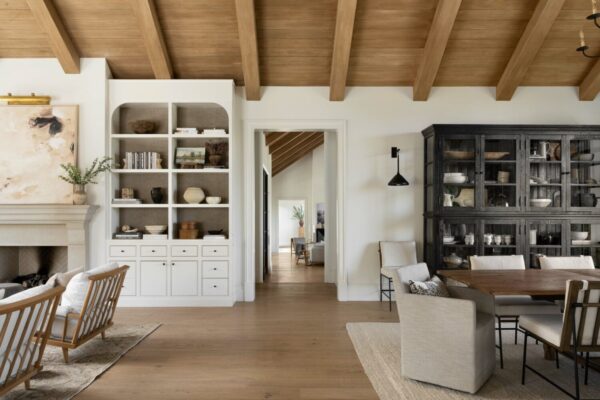
When mixing wood tones, matching the undertones is essential for achieving a cohesive look. Every type of wood has an undertone, either warm, cool, or neutral. To create harmony in a room, try to keep your wood selections within the same undertone family. For example, pairing a warm-toned oak floor with a reddish walnut cabinet can work well because they share a similar warmth.
In contrast, mixing a warm floor with a cool-toned ash table often looks disconnected unless carefully balanced. Identifying the undertones before combining pieces prevents visual tension and helps different woods feel like they belong in the same space.
5. Use Black or White as a Neutral Buffer
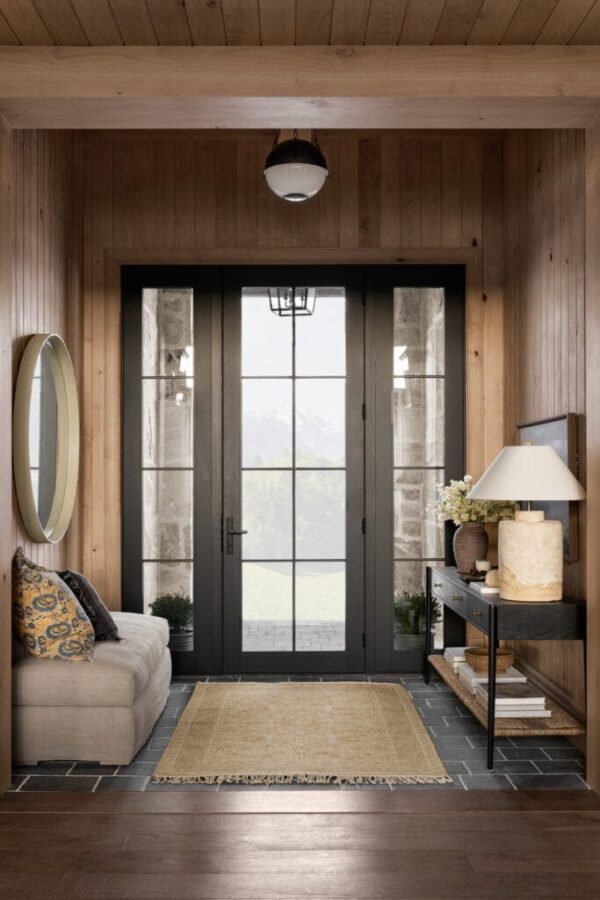
When different wood tones don’t naturally align, using black or white as a neutral buffer can bring clarity and structure to the overall look. These neutral elements offer contrast without introducing competing colors, making them ideal for balancing a space with multiple wood finishes.
A white wall, for instance, can frame both dark and light woods, helping them coexist without overwhelming each other. Similarly, black accents, like a metal lamp base or framed artwork, can ground the room and provide visual separation.
Neutrals don’t steal focus; they offer breathing room. They create clean lines between pieces and prevent the space from feeling crowded or chaotic.
6. Balance the Woods
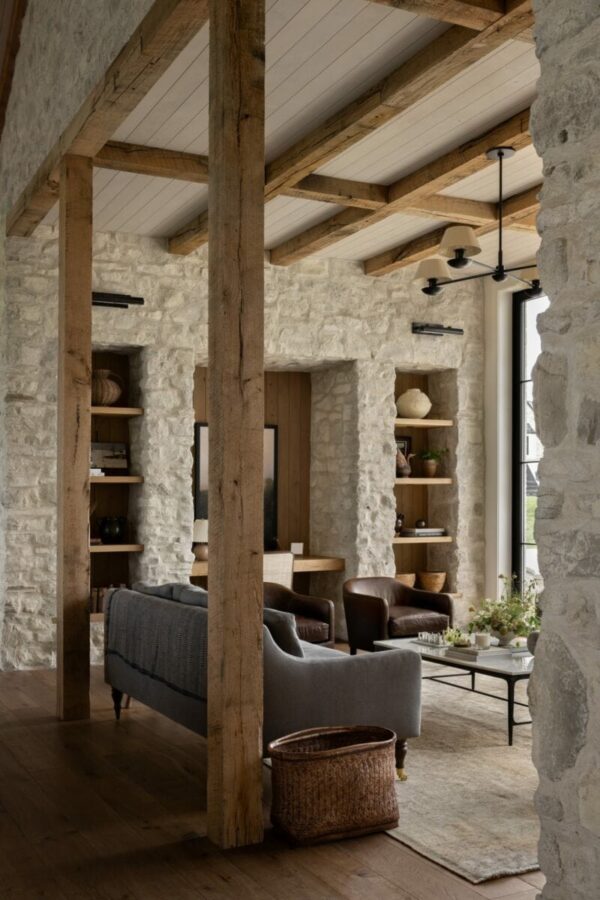
Instead of clustering all the dark tones on one side and all the light on the other, spread them thoughtfully throughout the space. Distribute similar tones across different levels, floors, furniture, shelving, to create a sense of movement and cohesion.
For instance, if your flooring is a lighter wood, consider repeating that tone on higher elements like wall shelves or cabinet doors. Balance also comes from scale. If one wood tone dominates in a large piece like flooring or a dining table, others should be introduced in smaller, supporting roles. The goal is visual equilibrium, not symmetry.
7. Limit the Palette to Two or Three Tones
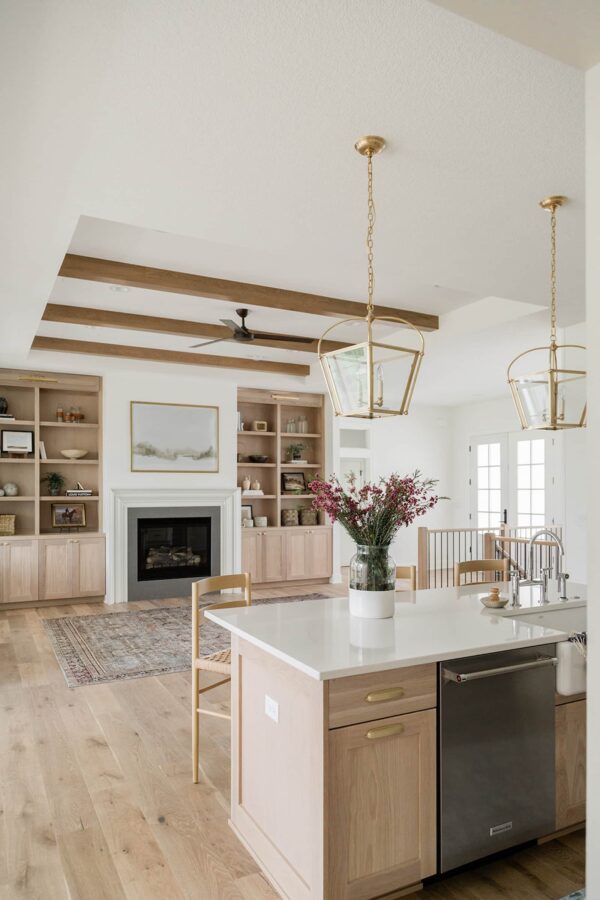
To keep a space from feeling chaotic, aim to work with two to three distinct wood tones. One should be dominant, while the others play supporting roles. This limitation keeps the overall look cohesive while still allowing for visual interest. When every piece of wood in a room is a different tone, the result can be visually noisy. By capping your palette at three tones, you maintain control over the room’s composition.
Think of it like curating an art gallery, each piece should have a purpose and relationship to the others. Use your dominant tone in larger items, a secondary tone in accent pieces, and a tertiary tone sparingly. This creates intentional variation without overwhelming the senses.
8. Use Wood as an Accent, Not Just Furniture
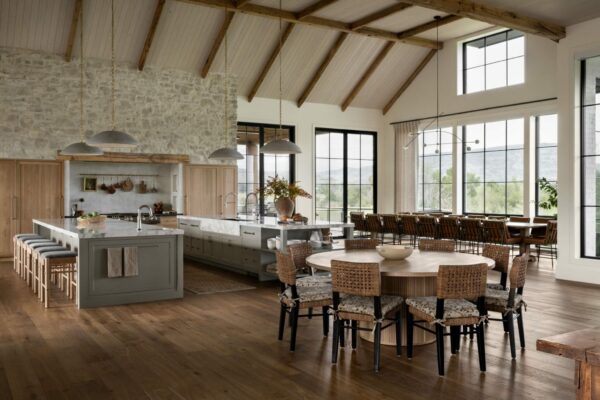
Wood tones can be introduced in ways other than furniture, consider wooden trays, wall art, lighting fixtures, or even exposed ceiling beams. These accents can echo the primary or secondary tones and help blend the overall palette. Using wood in subtle, unexpected ways helps distribute tones more organically throughout the space.
Smaller wood accessories are also easier to swap out if you want to make minor adjustments later. They offer flexibility in refining your palette without major expense. Incorporating wood in these ways also brings character and texture into the room, contributing to a layered and thoughtful design.
9. Assess the Grain
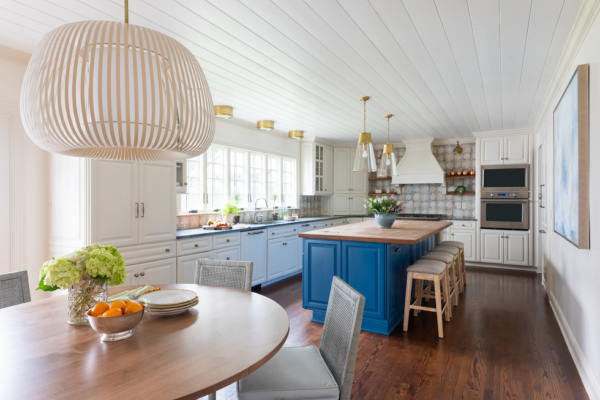
When mixing different wood tones, it’s important not just to consider color and undertone, but also the wood grain. Some woods, like oak or hickory, have strong, prominent grain patterns, while others such as maple or birch appear much smoother and more subtle.
If you mix multiple bold grains in the same room, the space can quickly feel overly busy or chaotic. Conversely, combining a strong grain with a more subdued one can create balance and visual interest without overwhelming the design. It’s also helpful to consider grain direction, horizontal versus vertical patterns, as this affects how the eye moves through the room.
10. Incorporate Other Natural Materials
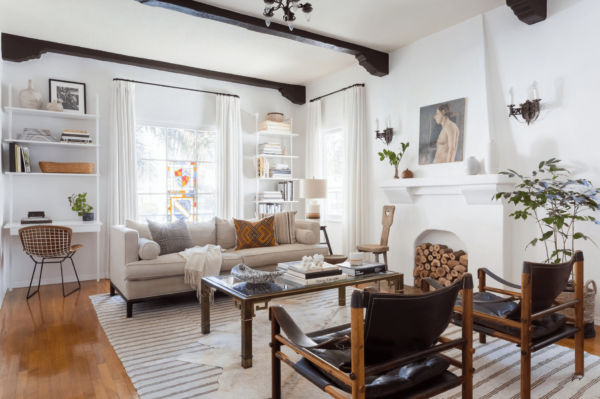
Bringing in materials like stone, linen, metal, or leather can ease transitions between different wood tones. A stone countertop or a woven linen curtain introduces a different texture that diverts attention from direct wood-to-wood comparisons.
These natural materials work as design bridges and can help achieve a layered, lived-in aesthetic. Materials like brass or matte black iron in lighting or hardware can add a third dimension, tying together warm and cool tones. Introducing a variety of textures also makes the space more tactile and visually engaging.
11. Pay Attention to Scale and Placement
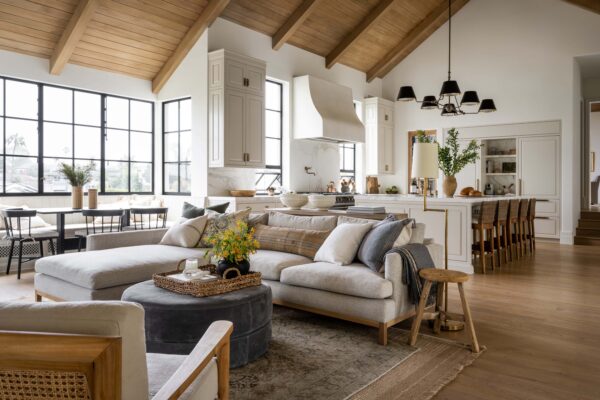
The visual weight of wood elements matters. A large dark piece can dominate a room, while smaller wood accents might feel like afterthoughts if not carefully placed. Consider the scale of each item and its position in the room. Distribute heavier tones strategically to ground the space, and use lighter ones to lift and open it. Think about vertical layering too, a heavy wood piece on the floor might pair well with lighter elements above. Placement should support visual movement across the space. Groupings should feel intentional, not crowded, with enough space to let each piece breathe.
Wrap Up
Successfully mixing wood tones is less about following rigid rules and more about understanding balance, proportion, and intentionality. When done well, the interplay of various wood finishes brings depth, texture, and authenticity to a space, making it feel curated rather than overly coordinated.
At Home Designing, we believe great design starts with understanding how every element contributes to the bigger picture. Whether you’re refreshing a single room or reimagining your entire home, the principles behind mixing wood tones apply across all styles and spaces. It’s all about creating harmony that feels personal, timeless, and refined. With these expert tips, you’re better equipped to build a home that tells your story, beautifully layered, and uniquely yours.












































































